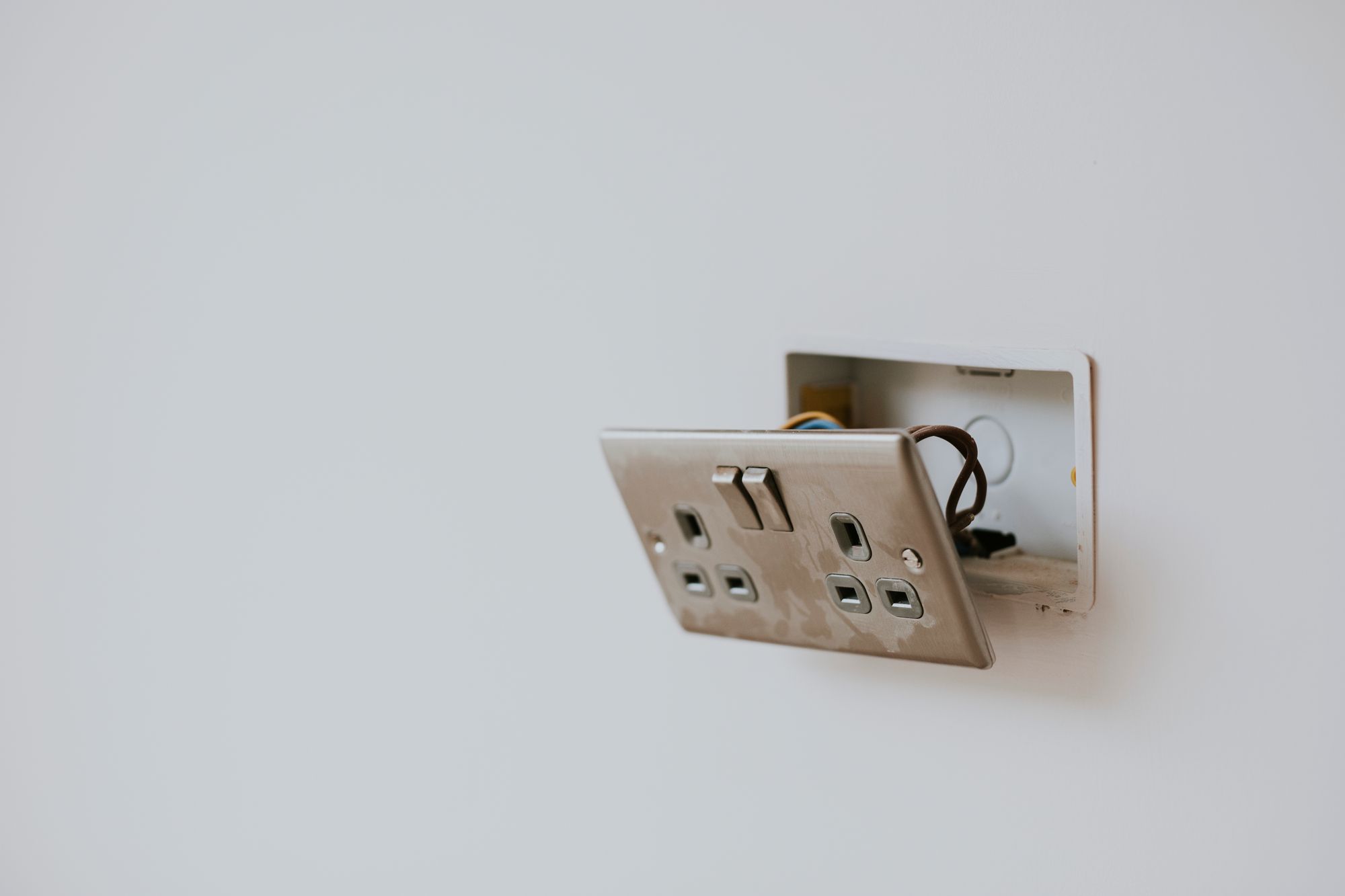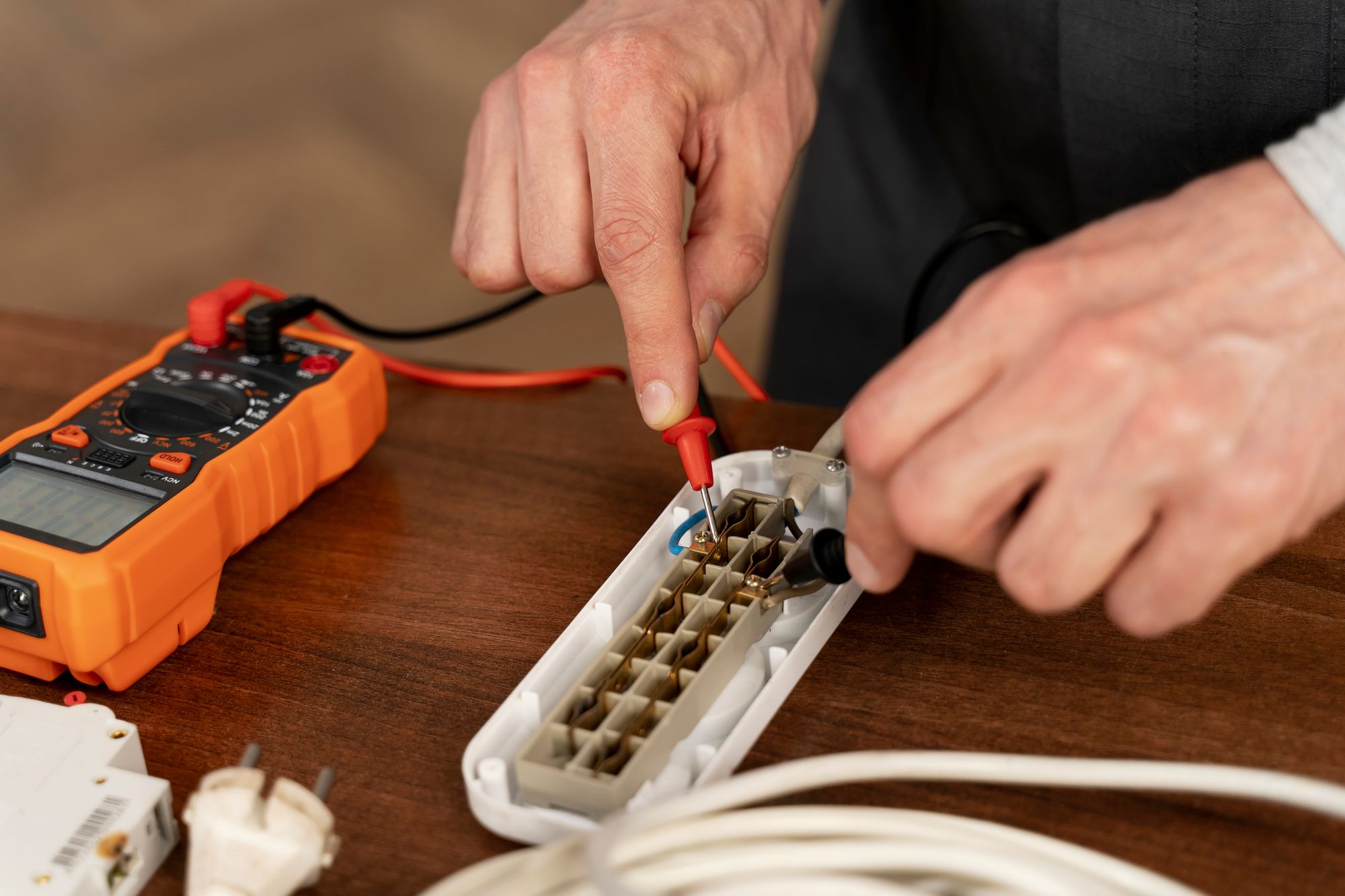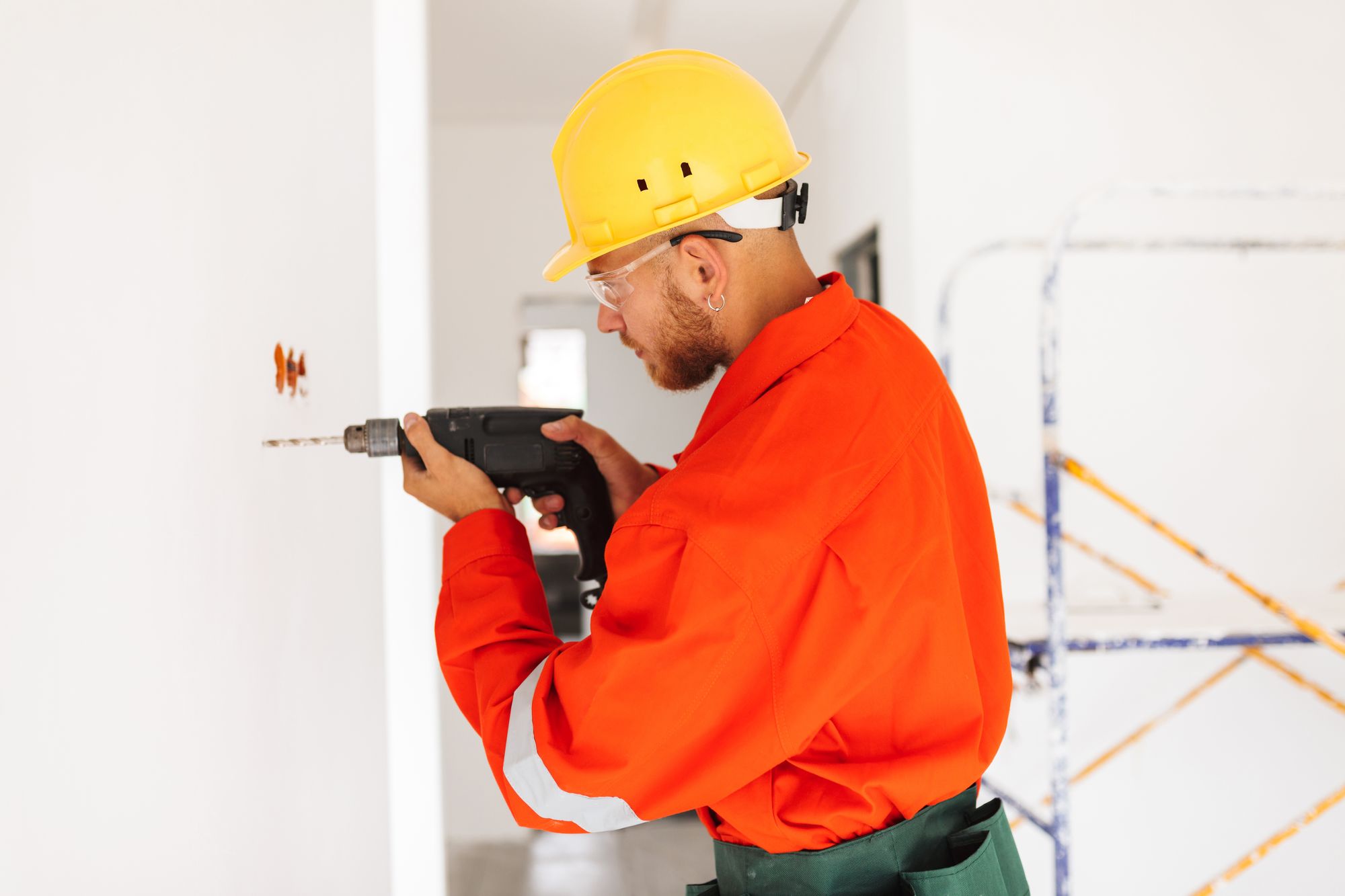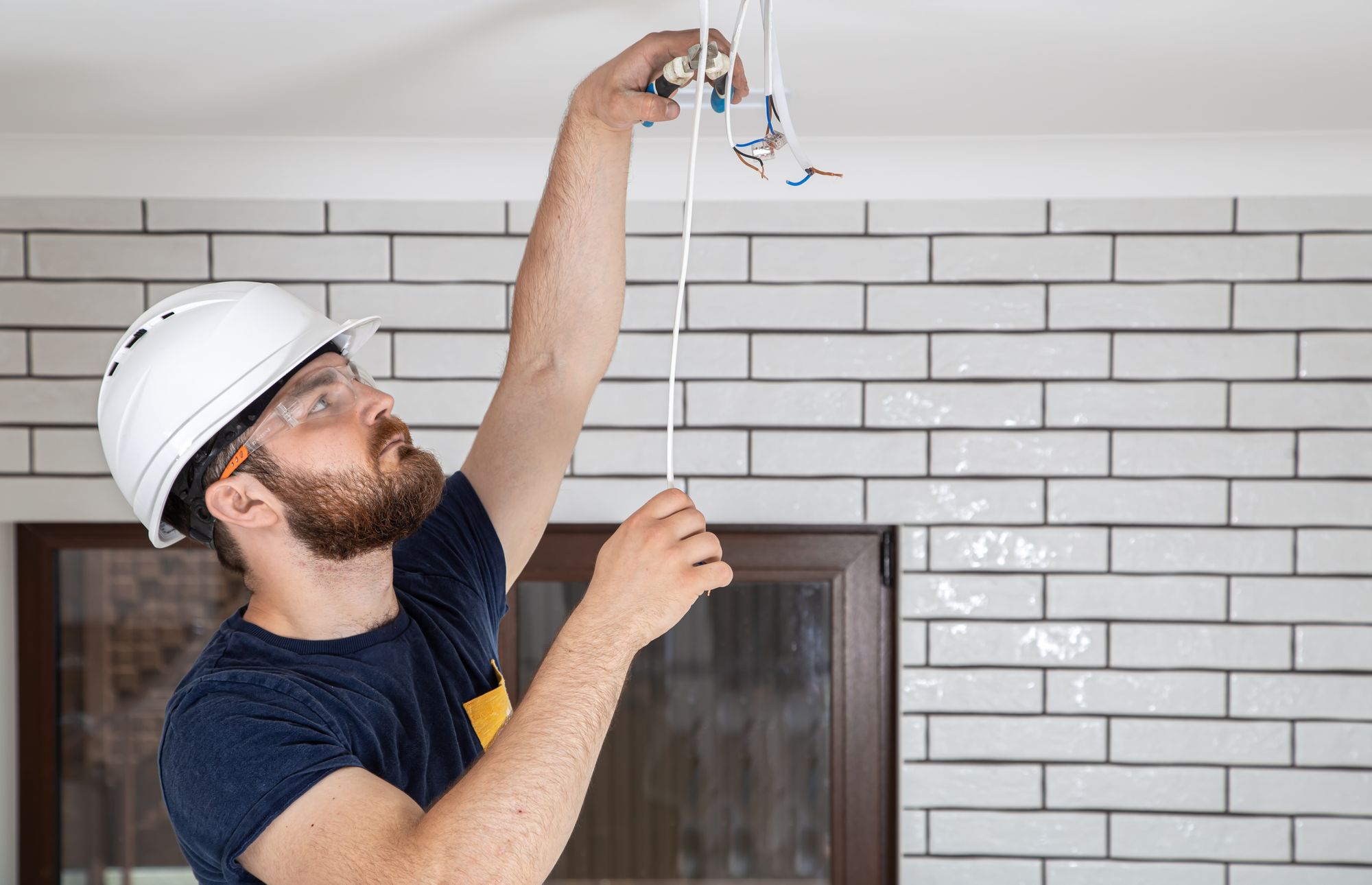Prevent Electrical Fires: Safety Tips for Homeowners
This article aims to educate homeowners about the importance of preventing electrical fires and provide practical guidance on how to achieve this.

Table of Contents
- Introduction
- Basic Principles of Home Fire Safety
- DIY Electrical Installation Guidelines
- DIY Electrical Installation Dos and DON’Ts
- Electricians Fire Safety Precautions
- Monthly Electrical Safety Checklist for Homeowners
- More Real-Life Examples
- Difference Between AFCI and GFCI Receptacles
- Frequently Asked Questions (FAQs)
- Resource List for Further Reading
- Conclusion
- References
Key Takeaways
- The importance of preventing electrical fires cannot be overstated. It is a crucial aspect of home safety that every homeowner should prioritize.
- Understanding the basic principles of home fire safety is fundamental in preventing electrical fires. This includes knowledge of how electricity works, the proper use of electrical appliances, and the significance of regular electrical system inspections.
- DIY electrical installation requires careful attention to guidelines and safety measures. Improper handling and installation of electrical systems can lead to severe electrical hazards, including fires.
- Professional electricians follow strict fire safety precautions when installing or repairing electrical systems. Homeowners can learn from these precautions to enhance their own home's safety.
- AFCI and GFCI receptacles play a critical role in electrical fire safety. Knowing the difference between the two and their respective roles can help in preventing electrical fires.
- It's beneficial to keep abreast of frequently asked questions about electrical fire prevention. These provide further insights and clarify common misconceptions about electrical safety.
Introduction: The Imperative of Electrical Fire Prevention
Electrical fire prevention is an essential aspect every homeowner must consider. It's not just about securing property, but more importantly, it's about safeguarding lives. Too often, the devastating impact of electrical fires is underestimated, leading to tragic consequences. By understanding and implementing effective fire prevention techniques, the risk of such disasters can be significantly reduced.
This article aims to educate homeowners about the importance of preventing electrical fires and provide practical guidance on how to achieve this. From understanding the basic principles of fire safety to learning from professional electricians, we will cover a range of topics that are crucial for maintaining a safe home environment. We will also delve into commonly asked questions about electrical fire safety to dispel myths and provide clear, actionable advice.
By the end of this guide, you will be better equipped to protect your home and loved ones from the threat of electrical fires.

Basic Principles of Home Fire Safety
Understanding and implementing the basic principles of home fire safety is a crucial step towards preventing electrical fires. These principles serve as a foundation for creating a safer living environment and significantly reducing the risk of dangerous electrical hazards.
The first principle of home electrical safety revolves around regular inspection and maintenance of your electrical systems. Over time, electrical wiring, outlets, and appliances can degrade or malfunction, posing a severe fire risk. Regular checks by a certified electrician can help identify potential issues before they turn into major hazards.
Secondly, understanding the proper usage of electrical appliances is key. Overloading circuits, using damaged appliances or extension cords, and improper use of heating devices are common causes of electrical fires. Always follow manufacturer guidelines for appliance usage and never overload sockets or power strips.
The third principle involves the appropriate and strategic placement of electrical appliances. Keep appliances away from flammable materials, ensure they have proper ventilation, and avoid placing cords under rugs or furniture where they can overheat.
Next, installing safety devices like Arc Fault Circuit Interrupters (AFCIs) and Ground Fault Circuit Interrupters (GFCIs) is a crucial fire safety measure for electrical hazards. AFCIs protect against fires caused by arcing faults in circuits, while GFCIs protect against electric shock caused by ground faults. These devices continuously monitor the electrical current and disconnect the power when they detect a dangerous condition.
Proper lighting installation and usage is another key principle. Use light bulbs with the correct wattage for your fixtures to prevent overheating, and always switch off lights when leaving a room for an extended period.
Additionally, knowing how to respond in the event of an electrical fire is paramount. This includes understanding how to use a fire extinguisher, when to cut off the power, and when to evacuate and call the fire department. Remember, water should never be used to extinguish an electrical fire as it can lead to electric shock.
Lastly, educating family members and housemates about these principles is vital. Everyone in the household should be aware of these fire safety measures for electrical hazards and understand the importance of adhering to them.
In conclusion, home electrical safety is not a topic to be taken lightly. Practicing these principles can significantly reduce the risk of electrical fires, protecting both your property and the lives of those within it. Regular maintenance, correct appliance usage and placement, installation of safety devices, proper lighting practices, and preparedness for emergencies are all integral components of a comprehensive electrical fire prevention strategy.
By understanding and implementing these principles, homeowners can create a safer living environment and have peace of mind knowing they have taken proactive steps to prevent electrical fires.
DIY Electrical Installation Guidelines
1. Comprehensive Preparation:
- Understanding Circuit Layout: Begin with a clear understanding of your home's electrical circuit layout. Identify which circuits power different areas of your home and the capacity of each circuit to prevent overloading.
- Gathering Correct Tools and Materials: Use insulated tools designed for electrical work and ensure you have all necessary materials before starting. This includes wire strippers, screwdrivers, a voltage tester, and the correct gauge and type of wire for your project.
2. Safety First:
- Power Off: Always turn off the power at the main breaker before starting any work. Use a voltage tester on the wires you'll be working with to ensure there is no power.
- Personal Protective Equipment (PPE): Wear appropriate PPE, such as safety glasses and insulated gloves, to protect against electrical shocks and sparks.
3. Avoiding Common DIY Pitfalls:
- Overconfidence: Overestimating your skills can lead to serious mistakes. If a project is beyond your ability, consult a professional.
- Ignoring Code Requirements: All electrical work must comply with local building codes. Ignoring these can lead to unsafe installations and legal issues.
- Poor Connections: Ensure all wire connections are tight and secure. Loose connections can lead to arcing and fires.
- Inadequate Wire Protection: Use conduit or appropriate means to protect wires from damage. Exposed or poorly insulated wires pose a significant risk.

4. Step-by-Step Installation:
- Planning: Sketch your project, noting the placement of outlets, switches, and the path of wires. Consider the load on each circuit to avoid overloading.
- Running New Wires: Drill holes through studs or joists to run new wires. Ensure wires are properly secured and protected from sharp edges.
- Installing Boxes: Install new outlet and switch boxes at the appropriate heights, ensuring they're firmly attached to studs or other structures.
- Making Connections: Connect wires to outlets, switches, and fixtures following proper color-coding conventions (e.g., black to brass, white to silver). Ensure all connections are tight and secure.
- Testing: Once installation is complete, turn the power back on and test your work with a voltage tester or by using the newly installed fixtures.
5. Final Checks and Maintenance:
- Inspect Your Work: Double-check all connections, ensure everything is properly secured and that there are no exposed wires.
- Ongoing Vigilance: Regularly inspect your DIY electrical work for any signs of wear, damage, or overheating.
Warnings and Considerations:
- Permit Requirements: Some electrical work may require a permit. Failing to obtain one can lead to penalties and may require you to redo the work.
- Inspection: Some jurisdictions require an inspection of any new or modified electrical installations. Schedule an inspection if required.
- Limitations: Recognize the limitations of DIY electrical work. Complex installations, such as adding a new circuit, should generally be left to professionals.
In conclusion, while DIY electrical installations can be rewarding, they come with significant risks. Adhering strictly to safety guidelines, understanding your limitations, and consulting professionals when in doubt are key to preventing accidents and ensuring a safe home environment.
DIY Electrical Installation Dos and DON’Ts
Taking on DIY electrical installations can be a rewarding endeavor, but it's essential to keep electrical fire safety tips in mind to prevent accidents. Here are some guidelines to follow:
- Understand the basics of electricity: Before you begin, familiarize yourself with basic electrical terms and concepts. It's crucial to understand what you're dealing with to minimize risks.
- Turn off the power: Always turn off the electrical circuit you'll be working on at the main breaker box. Use a voltage tester to ensure the power is off before starting your work.
- Use the right tools: Invest in high-quality, insulated tools made specifically for electrical work. These tools are designed to keep you safe while handling electrical wires and components.
- Follow codes and regulations: Your installation must adhere to local codes and regulations. These rules are in place for safety reasons and to reduce the risk of electrical fires.
- Wear protective gear: Always wear safety glasses, insulated gloves, and sturdy shoes to protect yourself from potential electrical hazards.
- Don’t overload circuits: Overloading an electrical circuit can lead to overheating and potentially cause a fire. Understand the power requirements of your appliances and ensure your circuits can handle the load.
- Use the correct wiring and components: Different installations require different types of wires and components. Using the wrong type can lead to malfunctions and fires.
- Properly install outlets and switches: Outlets and switches must be securely fastened to prevent loose connections, which can cause sparks and fires.
- Inspect your work: After you complete the installation, double-check your work. Ensure all connections are secure, and there are no exposed or frayed wires.
- Know when to call a professional: If a project seems too complicated or risky, don't hesitate to call a professional electrician. It's better to be safe than sorry.
Beyond these guidelines, it's crucial to maintain a high level of electrical hazard awareness. Regularly inspect your electrical system and appliances for any signs of damage or wear. Replace any frayed or damaged cords immediately and keep all electrical components clean and free of dust and debris.
Additionally, educate everyone in your household about electrical fire safety tips. Make sure they know what to do in case of an electrical fire and ensure they understand the dangers of misusing electrical appliances or outlets.
In conclusion, while DIY electrical installations can be a cost-effective and satisfying project, they should always be approached with caution and respect for the power of electricity. By following these guidelines and maintaining electrical hazard awareness, homeowners can complete their projects safely while significantly reducing the risk of electrical fires.

Electricians Fire Safety Precautions
Professional electricians adhere to strict fire safety precautions to ensure the work they perform does not lead to electrical fires. These precautions are not just important for their safety, but also for the safety of the homeowners they serve. They also serve as excellent fire safety protocols for homeowners to understand and follow.
- Usage of Proper Tools and Equipment: Electricians use specialized tools and equipment designed for electrical work. These tools are often insulated to protect against electrical shocks and prevent sparks that could lead to fires.
- Adherence to Codes and Standards: Electricians strictly follow local and national electrical codes and standards. These regulations, which cover everything from wiring methods to equipment installation, are designed to prevent electrical fires.
- Personal Protective Equipment (PPE): Wearing the right PPE is crucial. This includes safety glasses, insulated gloves, and flame-resistant clothing that can protect against sparks and electrical burns.
- Regular Inspection and Maintenance: Professional electricians regularly inspect and maintain electrical systems. They look for signs of wear and tear, degradation, or improper installation that could lead to electrical fires.
- Proper Installation and Repair: Electricians ensure all electrical installations and repairs are done correctly and safely. They make sure connections are secure, and there is no risk of overheating or sparking.
To illustrate these precautions in practice, let's consider the real-life example of John, a licensed electrician. John was hired to upgrade the electrical system in an old house. Before starting, he reviewed the latest electrical codes to ensure his work would be compliant. He wore his PPE, including insulated gloves and safety glasses, to protect himself from potential hazards.
John used his professional-grade, insulated tools to remove the old wiring. He carefully inspected the existing system, identifying several areas where the insulation had degraded, posing a fire risk. He replaced all the faulty wiring with new, code-compliant wires and securely connected them.
He installed new outlets, ensuring they were firmly attached and properly grounded. He also installed AFCIs in the electrical panel to provide additional protection against electrical fires. After completing the installation, John thoroughly inspected his work, checking all connections and ensuring there were no exposed or frayed wires.
John's meticulous approach and adherence to fire safety precautions ensured the safety of the homeowners and significantly reduced the risk of electrical fires. This example highlights the importance of following fire safety protocols for homeowners, whether you're a professional electrician or a DIY enthusiast.
In conclusion, these precautions taken by professional electricians play a crucial role in preventing electrical fires. By understanding and implementing these practices, homeowners can ensure their electrical work is not only compliant with local codes but also significantly safer. Remember, when in doubt, always consult with a professional electrician to ensure the safety of your home and loved ones.
Monthly Electrical Safety Checklist for Homeowners
Inspect Electrical Cords and Plugs
- Check all electrical cords for wear and tear. Look for frayed wires, cracked insulation, and damaged plugs. Replace any faulty cords immediately.
- Ensure cords are not pinched by furniture or doors, and never run them under rugs or carpets.
Test Smoke Detectors
- Test all smoke detectors in your home to ensure they are working properly. Replace batteries if necessary.
- Smoke detectors should be installed in every bedroom, outside sleeping areas, and on every level of your home.
Check Electrical Outlets and Switches
- Ensure all outlets and switches are functioning properly. Look for signs of overheating, such as discoloration or a burning smell.
- Test GFCI outlets by pressing the "Test" button. The outlet should turn off immediately. Press the "Reset" button to restore power. If it doesn’t trip or reset, replace it.
Assess Your Home’s Electrical Load
- Make sure you're not overloading circuits. Be mindful of the number of high-wattage appliances in use at the same time.
- Consider unplugging some appliances or using them at different times to distribute the electrical load evenly.
Inspect Light Fixtures and Bulbs
- Check that all light fixtures have bulbs with the correct wattage. Using bulbs with a higher wattage than recommended can lead to overheating.
- Ensure light fixtures are free of dust and flammable materials.
Maintain Appliances
- Regularly clean and maintain major appliances, such as dryers, to prevent lint buildup that can pose a fire risk.
- Inspect appliance cords and plugs for damage before use.
Practice Safe Appliance Use
- Never leave heating appliances like irons, space heaters, or stovetops unattended when in use.
- Keep flammable materials away from heating appliances.
Use Power Strips and Extension Cords Wisely
- Do not overload power strips. Use them sparingly and for temporary needs only.
- Ensure power strips have surge protection and are in good condition.
Schedule an Annual Professional Inspection
- Consider hiring a licensed electrician to perform an annual inspection of your home’s electrical system to identify and address any potential risks.

More Real-Life Examples
Example 1: The Overloaded Power Strip
Situation: The Johnson family, living in a suburban neighborhood, experienced a close call when a power strip in their living room overheated one evening. They had connected multiple high-wattage appliances, including a space heater, television, and gaming console, to a single power strip to accommodate their entertainment setup. Unbeknownst to them, this overloaded the power strip, causing it to overheat and start smoldering.
Resolution: Luckily, Mr. Johnson noticed the smell of burning plastic in time. He quickly unplugged the power strip and used a fire extinguisher to douse the small flames that had begun to lick the carpet. The family then called a professional electrician, who inspected their home's electrical system. The electrician installed additional outlets to distribute the electrical load more evenly and provided the family with guidance on electrical load management to prevent future incidents.
Lesson: This incident underscores the importance of not overloading power strips and being mindful of the electrical load placed on a single outlet. It also highlights the necessity of having a fire extinguisher readily available and knowing how to use it.
Example 2: The Forgotten Space Heater
Situation: In a small apartment in the city, Emily, a college student, left a space heater running in her bedroom while she went to classes. The space heater was placed too close to a pile of laundry. As the day went on, the heater's continuous operation and its proximity to flammable materials caused the laundry to catch fire, leading to significant damage in her apartment.
Resolution: The building's fire alarm system alerted the fire department in time to prevent the fire from spreading to adjacent units. After this harrowing experience, Emily learned to never leave heating devices unattended and to always ensure they are placed at a safe distance from flammable items.
Lesson: This story illustrates the danger of leaving heating devices unattended, especially in proximity to flammable materials. It emphasizes the need for vigilance and adherence to safety guidelines when using heating appliances.
Difference Between AFCI and GFCI Receptacles
When it comes to electrical fire safety, both Arc Fault Circuit Interrupters (AFCIs) and Ground Fault Circuit Interrupters (GFCIs) play significant roles, each offering different types of protection for your home.
AFCI receptacles are designed to protect against fires caused by arc faults. An arc fault is a dangerous electrical problem caused by damaged, overheated, or stressed electrical wiring or devices. AFCIs detect such faults and rapidly de-energize the circuit, thereby preventing potential fire ignition.
On the other hand, GFCI receptacles are designed to protect people from electric shock. A GFCI constantly monitors the electrical current flowing in a circuit. If it detects any imbalance, indicating a leakage of current (a ground fault), it quickly cuts off power to the circuit, preventing potential electrical shocks or electrocutions.
Both AFCI and GFCI receptacles are crucial elements of a holistic electrical safety strategy. They provide unique and complementary forms of protection. For maximum safety, it's recommended to use both types of receptacles in the home, with AFCIs commonly used for bedroom circuits and GFCIs for circuits in areas with water presence, like bathrooms and kitchens.
In terms of pricing, GFCI receptacles are typically more affordable, ranging from $10 to $20 per unit. AFCI receptacles are generally more expensive due to their more complex technology, with prices ranging from $30 to $50 per unit. These prices may vary depending on the brand and specific features.
In conclusion, while AFCI and GFCI receptacles serve different purposes, they are both vital for maintaining electrical safety in your home. Their cost is a small investment compared to the protection they offer against electrical fires and shocks. Always consult with a licensed electrician to ensure these safety devices are correctly installed and functioning in your home.
Frequently Asked Questions (FAQs)
Q1: What is electrical fire prevention?
Electrical fire prevention refers to the measures taken to reduce the risk of fires caused by electrical systems. These measures include routine inspection of electrical systems, proper use of electrical devices, adherence to electrical codes, and installation of safety devices like AFCIs and GFCIs.
Q2: What are some common causes of electrical fires?
Common causes of electrical fires include overloaded circuits, faulty or aging wiring, incorrect or outdated electrical installations, misuse of extension cords, and improper use of electrical devices. Regular maintenance and inspection can help identify and rectify these issues, contributing to effective electrical fire prevention.
Q3: What steps can I take for effective electrical fire prevention in my home?
To prevent electrical fires in your home, ensure that your electrical installations are up-to-date and adhere to local codes. Regularly inspect your electrical systems and appliances for signs of wear and tear. Avoid overloading circuits and use extension cords sparingly. Install AFCIs and GFCIs in your home to protect against arc faults and ground faults, respectively.

Q4: How can I tell if my electrical system is overloaded?
Signs of an overloaded electrical system include frequently tripped circuit breakers or blown fuses, dimming or flickering lights, buzzing or sizzling sounds from your electrical system, and outlets that are discolored or emit a burning smell. If you notice any of these signs, consult with a professional electrician immediately.
Q5: Are power strips a safe way to add more outlets?
While power strips provide a convenient way to add more outlets, they should be used sparingly and never as a permanent solution. Overloading a power strip can lead to overheating and potentially cause an electrical fire. For long-term solutions, consider having a licensed electrician install additional outlets.
Q6: How often should I inspect my home's electrical system?
It is recommended to perform a basic home electrical system inspection every year. However, if your home is older, or you're frequently tripping breakers or blowing fuses, it might be best to have your system professionally inspected more frequently.
Q7: Can I handle electrical work by myself?
While some minor electrical work can be done using DIY methods, most electrical work should be left to professionals. Electricity can be dangerous if not handled correctly, and improper installations can lead to serious risks, including fire. Always prioritize safety over saving a few dollars.
Q8: Can LED bulbs help in reducing the risk of electrical fires?
A: Yes, LED bulbs generate less heat than incandescent or halogen bulbs, reducing the risk of overheating and potentially preventing fires.
Q9: What steps can I take to prevent electrical fires during the holidays?
A: Ensure holiday lights are in good condition and rated for their intended use (indoor or outdoor). Turn off all holiday lights before going to bed or leaving the house, and avoid overloading electrical outlets.
In conclusion, electrical fire prevention is an essential aspect of home safety. By staying informed and proactive, you can significantly reduce the risk of electrical fires in your home.
Resource List for Further Reading
Local Electrician Directories:
- Find an Electrician: A comprehensive directory to locate licensed electricians in your area. Local Electrician Directory
Online Courses for Understanding Home Electrical Systems:
- Alison Free Learning: Offering a course on Basic Electrical Theory that covers the essentials of home electrical systems. Alison Electrical Course
- Coursera: Provides various courses on electrical engineering that can deepen your understanding of how home electrical systems work. Coursera Electrical Engineering
Government Resources on Electrical Safety Standards:
- U.S. Consumer Product Safety Commission (CPSC): Offers guidelines and tips for electrical safety at home. CPSC Electrical Safety
- National Fire Protection Association (NFPA): Provides resources and educational materials on electrical fire safety. NFPA Electrical Safety
- Electrical Safety Foundation International (ESFI): A dedicated resource for comprehensive electrical safety tips for homeowners. ESFI Home Safety
Conclusion
This article has highlighted the importance of electrical fire prevention and the measures taken by professional electricians to ensure safety. These precautions, including the use of proper tools and equipment, adherence to codes and standards, wearing appropriate PPE, and regular inspection and maintenance, are critical in preventing electrical fires.
The discussion on AFCI and GFCI receptacles illuminated their distinct roles in enhancing electrical safety, offering protection against potential fires and electrical shocks. The FAQ section addressed common queries about electrical fire prevention, further emphasizing the importance of these safety measures.
In conclusion, electrical fire prevention is not just a professional electrician's responsibility but should be a priority for every homeowner. By understanding and implementing these precautions, we can significantly reduce the risk of electrical fires, ensuring the safety of our homes and loved ones. Remember, preventing electrical fires starts with understanding and respecting the power of electricity and the potential hazards it can pose if not handled correctly.
References
1. "AFCIs Come of Age". (2017). National Fire Protection Association. Retrieved from https://www.nfpa.org/News-and-Research/Publications-and-media/NFPA-Journal
2. "Preventing Electrical Overloads". (2020). Electrical Safety Foundation International. Retrieved from https://www.esfi.org/resource
3. "GFCI Principles: Ground Fault Protection". (2018). Eaton's Wiring Devices. Retrieved from https://www.eaton.com/us/en-us
4. "Electrical Fire Safety." (2019). U.S. Fire Administration. Retrieved from https://www.usfa.fema.gov/prevention
These sources provide valuable insights into electrical fire prevention, the functionality of AFCI and GFCI receptacles, and the importance of electrical safety in homes.
